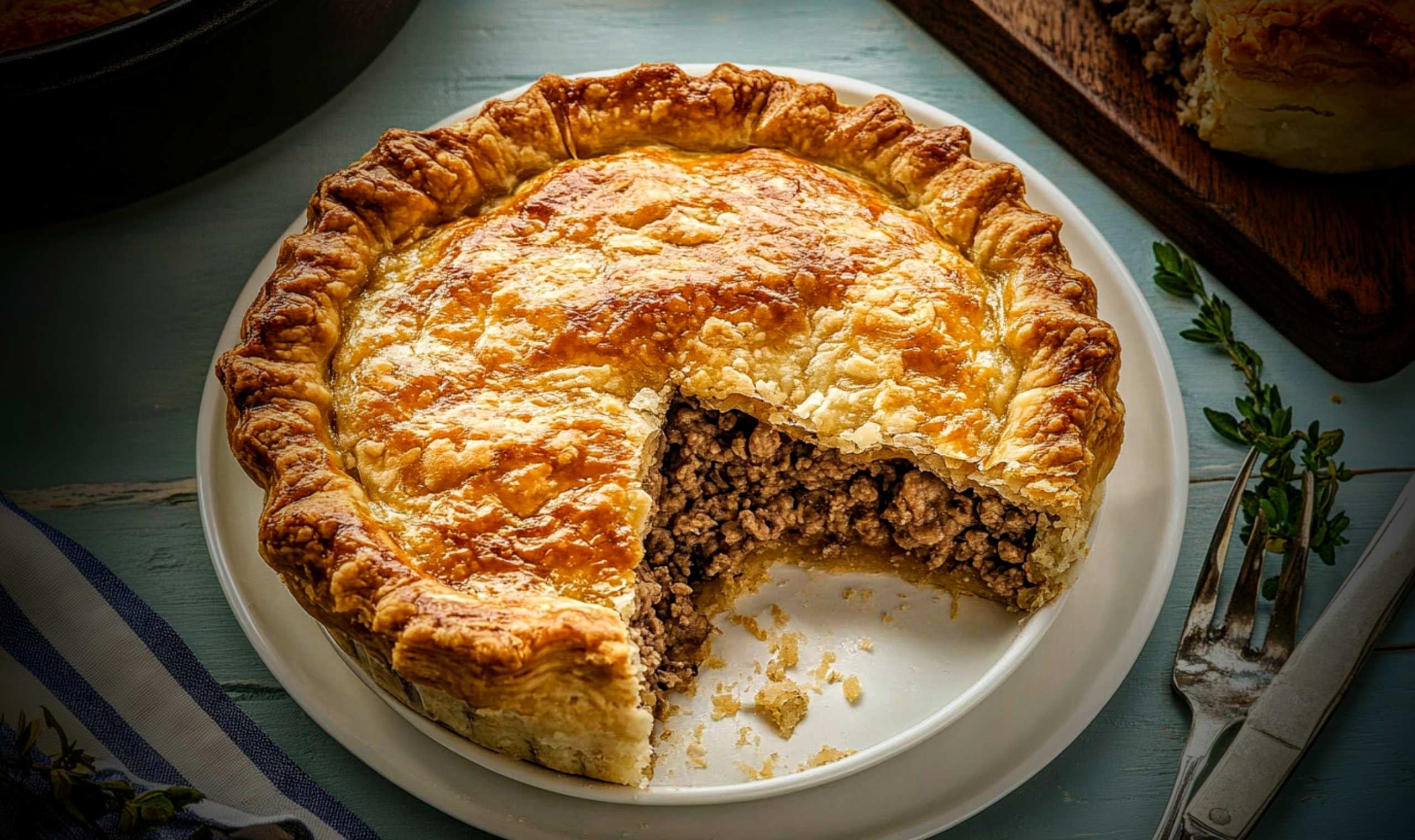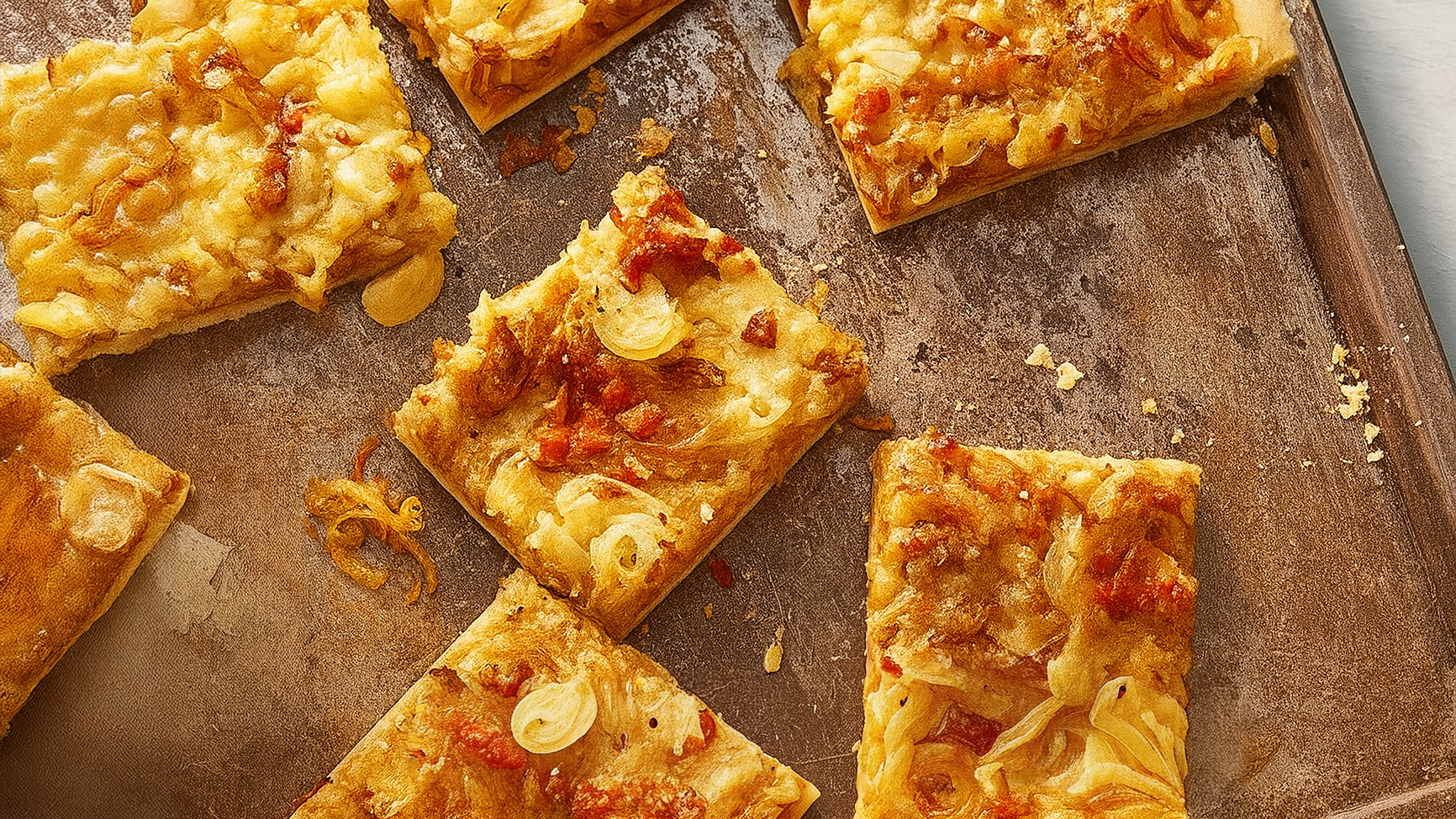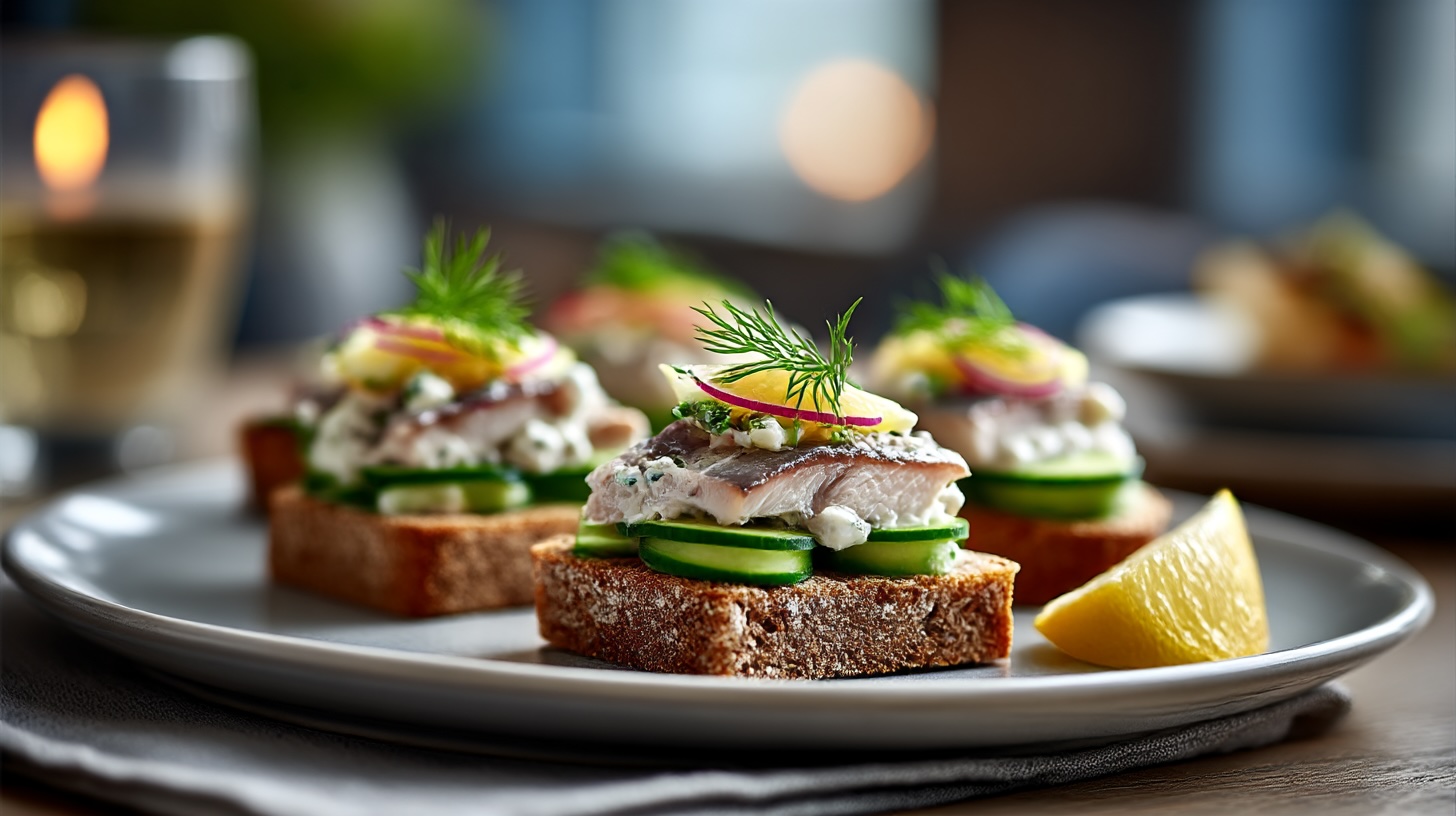Tourtière: Quebec’s Meaty Masterpiece
If there’s one dish that sums up the cosy, carb-loving spirit of Quebec, it’s tourtière. This hearty meat pie is a staple of French-Canadian cuisine, a shining example of how a simple concept—meat encased in pastry—can transcend the sum of its parts. Whether enjoyed during the festive season or on a chilly winter night, tourtière is the culinary equivalent of a woolly jumper.
Tourtière: A Pie with a Past
Tourtière’s roots stretch back to Quebec’s earliest settlers, who brought their meat-pie traditions with them from France. These settlers needed meals that were hearty, filling, and easy to prepare in large quantities, and tourtière fit the bill perfectly. The name itself is thought to come from the type of dish used to bake the pie, called a “tourtière.” It’s a dish with a history as rich as its filling, embodying the resourcefulness and creativity of the region’s culinary heritage.
Over time, tourtière became a holiday tradition, particularly during Réveillon, the Christmas Eve feast. Today, it’s enjoyed year-round, bringing families together over steaming plates of flaky pastry and spiced meat.
Regional Spins on a Classic
While the basic formula for tourtière remains constant—pastry, seasoned meat, baked to perfection—the details can vary dramatically depending on where you are in Quebec. In Montreal, the filling often features a mix of ground pork and beef, seasoned with cinnamon, cloves, and allspice. Travel to the Saguenay–Lac-Saint-Jean region, and you’ll find a version made with cubed meat (often pork, veal, and game) and potatoes, baked in a deep dish for hours until the flavours meld beautifully.
In rural areas, ingredients like wild game or even fish might make an appearance, reflecting the local bounty. Every family seems to have its own recipe, passed down through generations, each one a fiercely guarded secret.
Drinks That Pair Perfectly with Tourtière
Tourtière’s robust flavours call for a drink with enough character to hold its own. A bold red wine, like a Syrah or a Malbec, complements the pie’s spiced filling beautifully. For beer lovers, a dark ale or a nutty brown beer provides the right balance of richness and refreshment.
If you’re in the mood for something a bit stronger, a glass of whisky or a warming apple brandy hits the spot. For non-alcoholic options, a spiced apple cider or a mug of hot, sweetened tea does the job just as well.
The Perfect Plate Partners
While tourtière is undeniably the star of the show, a few thoughtful accompaniments can elevate the meal. A crisp green salad with a tangy vinaigrette offers a refreshing contrast to the pie’s richness. Pickled vegetables, particularly beets or onions, add a pop of acidity that cuts through the savoury filling.
For something heartier, serve tourtière with mashed potatoes and a dollop of chutney or cranberry sauce on the side. And if you’re going for full-on indulgence, why not add a generous pour of gravy to the mix?
Tourtière: Why the Pastry Matters
The crust of a tourtière isn’t just a vessel; it’s an integral part of the experience. A good pastry should be buttery and flaky, providing a delicate counterpoint to the hearty filling. Traditional recipes often use lard or butter, though some modern takes opt for vegetable shortening for a lighter texture.
Blind baking the base can help avoid a soggy bottom (Paul Hollywood would approve), while a brush of egg wash on the top ensures that golden, glossy finish. Whether you crimp the edges into intricate patterns or go for a rustic, free-form look, the crust sets the tone for the entire pie.
The Filling: Spices and All Things Nice
The filling of a tourtière is where the magic happens. Ground pork is the traditional choice, often combined with beef or veal for added depth. Onions are a must, sautéed until soft and sweet, and breadcrumbs or mashed potatoes are often used to bind everything together.
The seasoning is what sets tourtière apart. A blend of warm spices—think cinnamon, allspice, cloves, and nutmeg—creates a flavour profile that’s both comforting and complex. Some recipes also include a splash of broth or wine to keep the filling juicy and enhance the flavours.
A Recipe for Tourtière to Remember
Ingredients:
For the pastry:
- 300g plain flour
- 150g unsalted butter, chilled and cubed
- 1/2 tsp salt
- 3-4 tbsp cold water
For the filling:
- 500g ground pork (or a mix of pork and beef)
- 1 onion, finely chopped
- 1 clove garlic, minced
- 1/2 tsp ground cinnamon
- 1/4 tsp ground cloves
- 1/4 tsp ground allspice
- Salt and pepper to taste
- 1/2 cup breadcrumbs or mashed potatoes
- 1/4 cup chicken or beef broth
For the topping:
- 1 egg, beaten
Method:
To make the pastry, mix the flour and salt in a bowl. Rub in the butter until the mixture resembles breadcrumbs. Add cold water, a tablespoon at a time, until the dough comes together. Wrap in cling film and chill for 30 minutes.
For the filling, sauté the onion and garlic in a pan until softened. Add the ground meat and cook until browned. Stir in the spices, salt, pepper, breadcrumbs, and broth. Cook for a few more minutes, then let the mixture cool.
Preheat your oven to 200°C (180°C fan). Roll out two-thirds of the pastry and line a pie dish. Add the cooled filling and cover with the remaining pastry. Crimp the edges to seal, and cut a few slits in the top for steam to escape. Brush with beaten egg.
Bake for 30-35 minutes, or until the crust is golden and crisp. Serve warm, with your favourite accompaniments, and enjoy a slice of Quebecois tradition.



